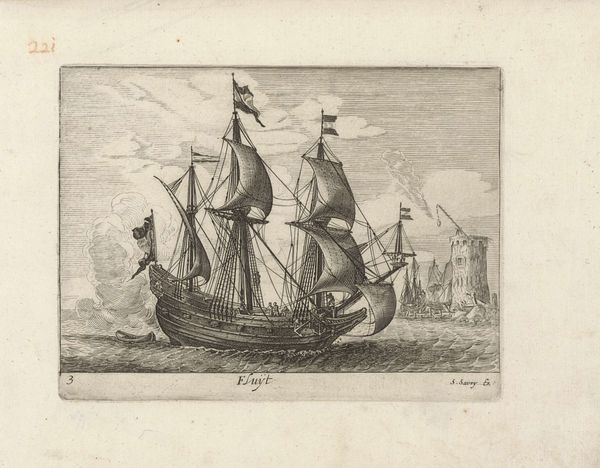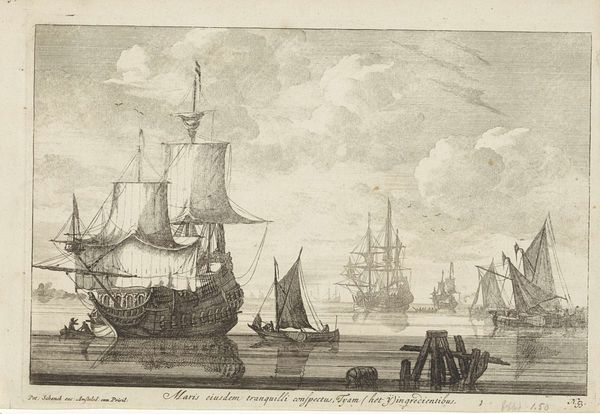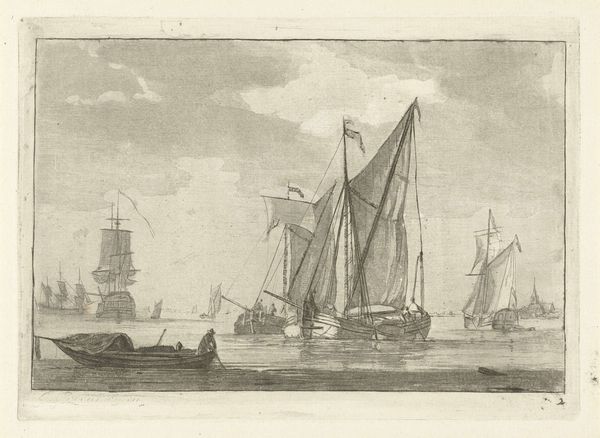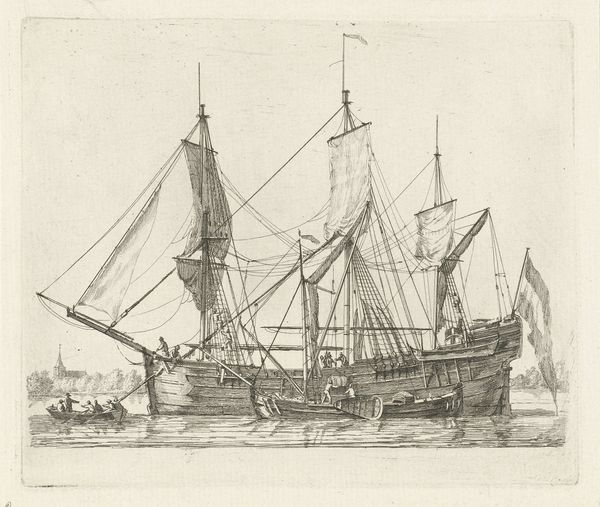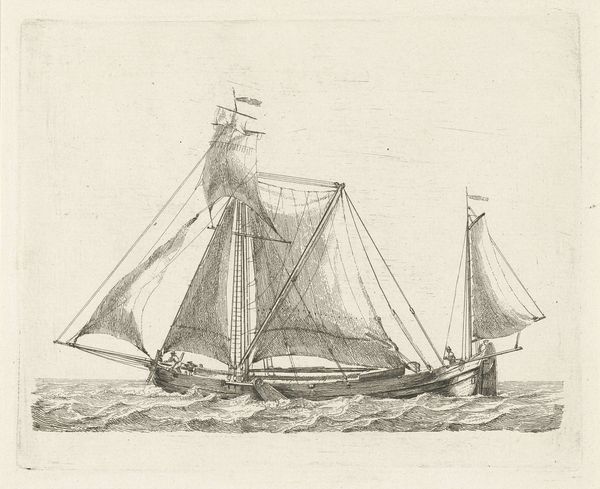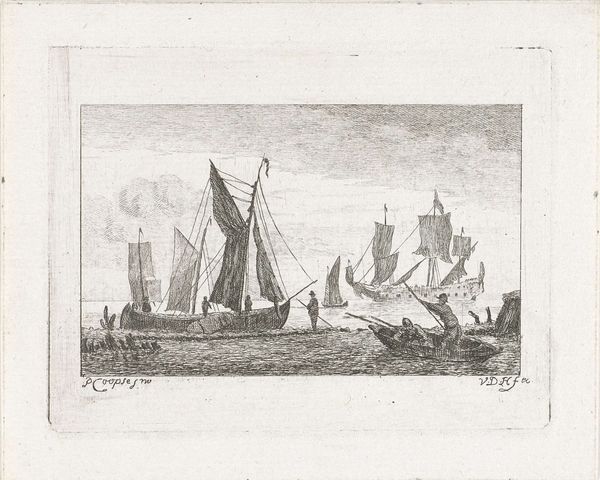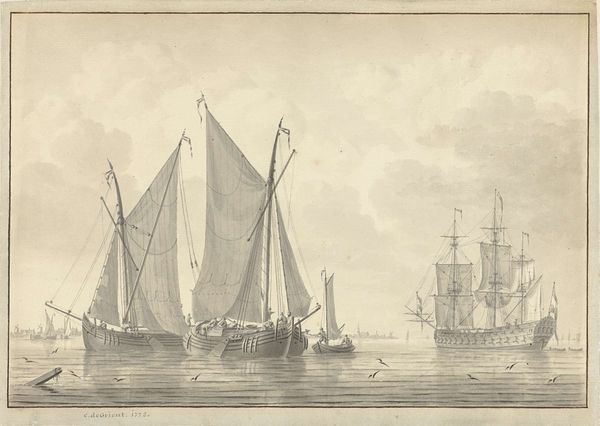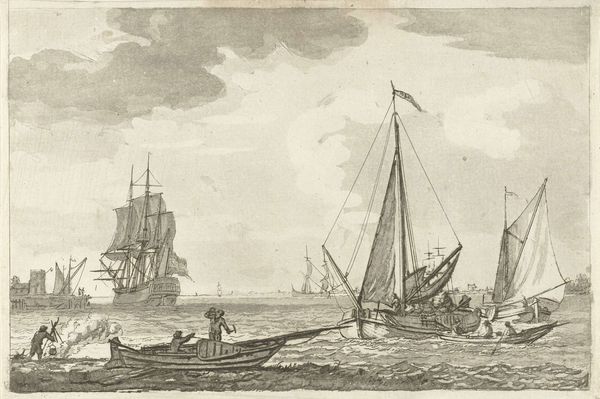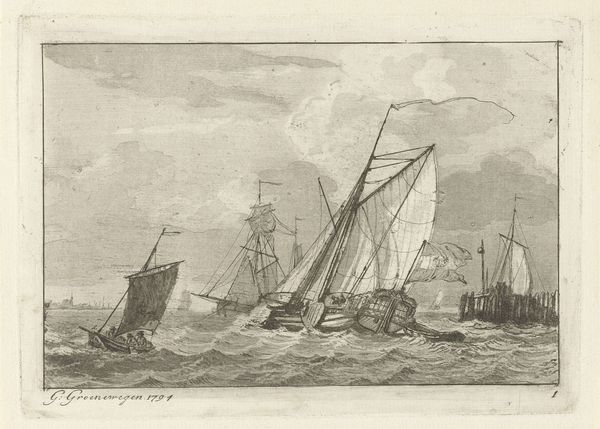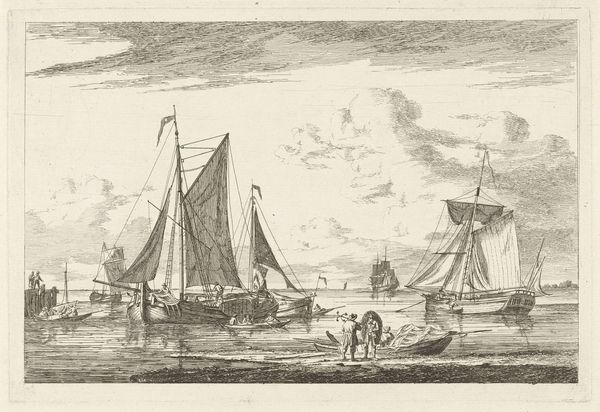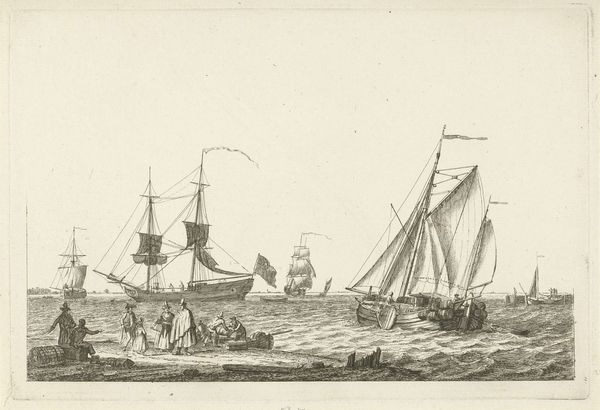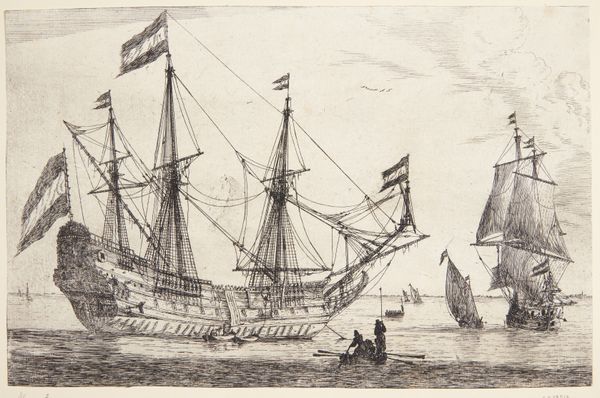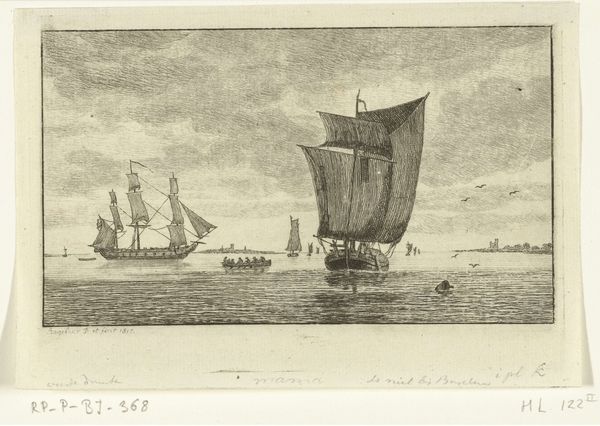
print, engraving
#
baroque
#
dutch-golden-age
# print
#
landscape
#
cityscape
#
engraving
#
sea
Dimensions: height 176 mm, width 260 mm
Copyright: Rijks Museum: Open Domain
Curator: Here we have "Oorlogsschip met drie masten aan een pier," or "Warship with Three Masts at a Pier," an engraving dating from between 1675 and 1711. The artist is, unfortunately, anonymous. Editor: There’s something so evocative about old ships. The intricacy of the rigging, all captured with such delicate lines, just stirs something in me. It's like a miniature, meticulously crafted world. Curator: What strikes me is how this print illustrates the Dutch Republic's naval power. Consider the vast infrastructure required to build and maintain ships of this scale, reflecting significant state investment in maritime trade and warfare. This image itself becomes a commodity, consumed to project power. Editor: Yes, you’re right, and I suppose, that power dynamic bleeds into how I see it too. Even rendered as a delicate engraving, the ship retains an imposing presence. Look at the detail given to the hull and masts versus the rather indistinct skyline in the distance. It asserts dominance, doesn't it? It sort of floats on the edge of being sentimental and sinister, which is probably just right. Curator: Exactly. Engravings like this weren’t merely decorative; they served a vital function in disseminating information, projecting authority, and promoting trade. This specific engraving makes part of a larger body of works used as a mode of distribution of visual culture, influencing perceptions of naval strength. The relatively widespread production implies a degree of public consumption and engagement with these themes of maritime supremacy. Editor: I'm captivated by the textures achieved solely through lines. And how cleverly the artist suggests light on water, without any true tonal variation! It must have taken a skilled hand and a deeply felt understanding of the materials to get to the core feeling of a day at the docks so right. Curator: In a way, it’s like reverse engineering a painting: transforming tonal complexities back into a linear language, circulating images via print which allowed a wider dissemination through different layers of society, beyond those with access to paintings and other luxury goods. Editor: So, in the end, we find ourselves thinking about the distribution of art and, in turn, the even wider distribution of meaning... a warship as information... food for thought indeed! Curator: Precisely, demonstrating how a seemingly simple image reveals complex interconnections of commerce, craft, and control in the Dutch Golden Age.
Comments
No comments
Be the first to comment and join the conversation on the ultimate creative platform.
